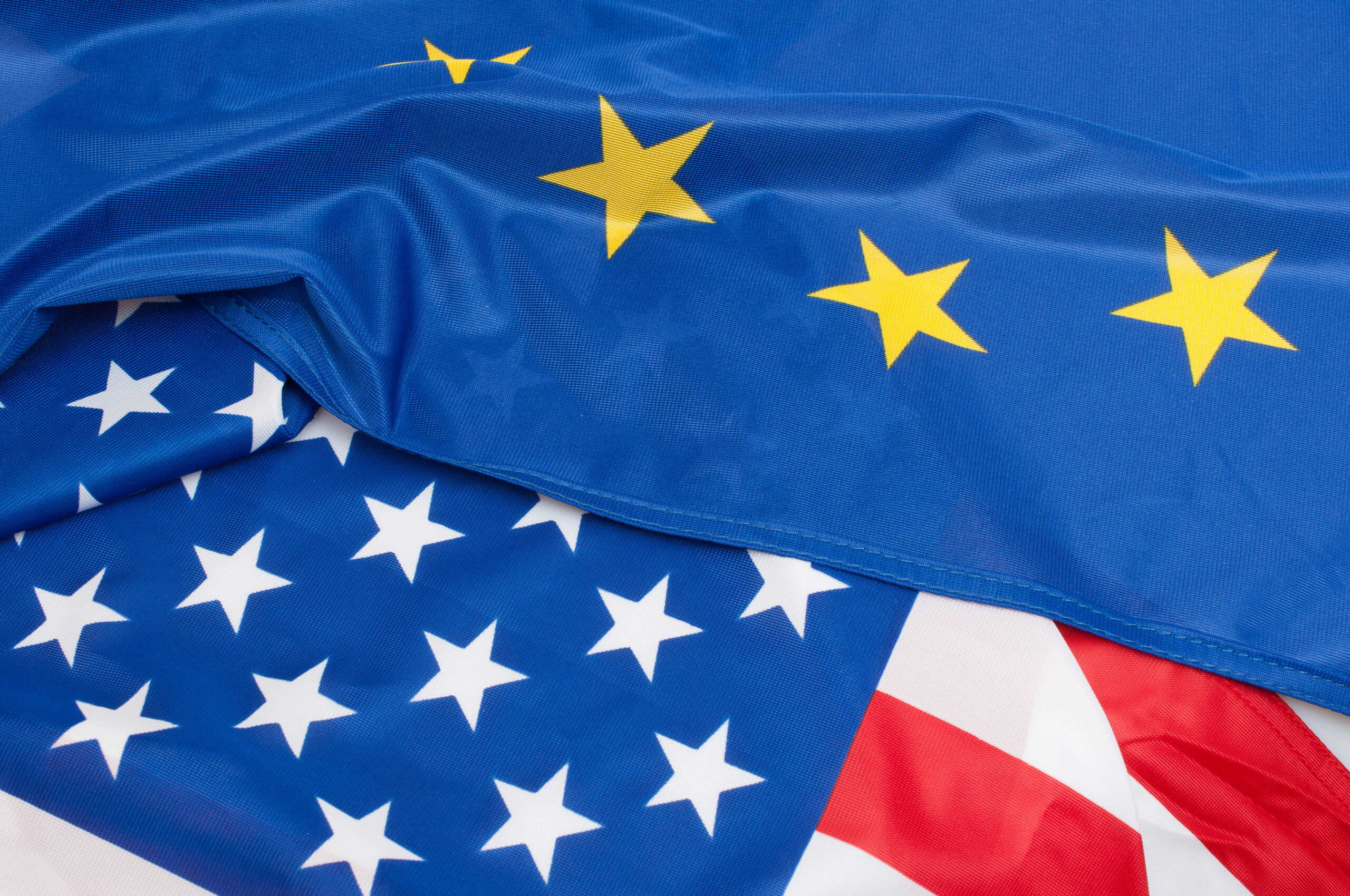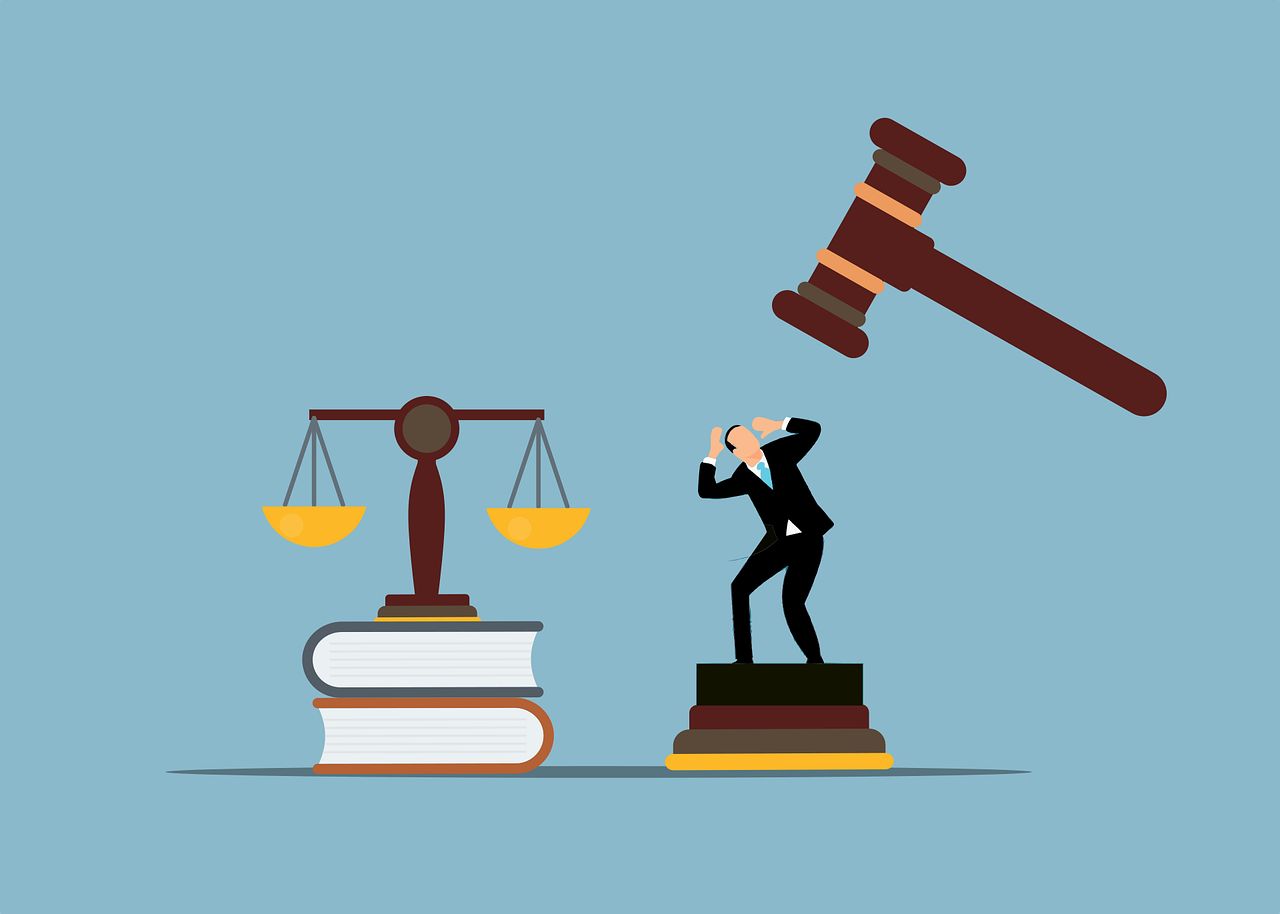EB1 vs EB2 Green Card
Foreign nationals may obtain U.S. immigration benefits through the employment-based immigration categories (E.B.). EB-1 and EB-2 are the two categories. The EB1 vs. EB2 question is a popular topic of discussion due to the advantages and disadvantages that each one possesses. We’ll identify similarities and differences between each along with EB-1 vs. EB-2 processing time, how to go from EB2 to EB1 -2, the National Interest Waiver (NIW), and much more!
EB-1 and EB-2 Differences
EB-1 VISA
An EB-1 visa is the first preference category for applicants who are leaders in the fields of science, art, education, business, or athletics. There are three subcategories in the EB-1:
EB-1A – The first subcategory is for those that possess an extraordinary ability and can prove that they are in the top percentile in their field. This subcategory has 10 different eligibility criteria. You must meet at least three of those requirements. Those who qualify typically have evidence of international awards, exclusive memberships, or a high salary. Eligible applicants can self-apply for the EB-1A and don’t need a sponsoring employer or job offer.
EB-1B – The second subcategory is for outstanding researchers and professors. An applicant’s work in their field contributes to EB-1B’s eligibility. In addition, you must have international recognition, at least three years of experience, and a job offer for a permanent position in the U.S. Apart from these, the EB-1B subcategory also has six different eligibility criteria. You must meet at least two of those requirements.
EB-1C – The third and last subcategory of the EB-1 green card is for executives and managers of multinational companies with a branch in the U.S. and at least one other country. To qualify, you must meet the USCIS standards for an executive and manager. You must also have worked as an executive or manager in the company’s foreign branch for at least one year in the three years leading up to your EB-1C application. The time requirement makes this a difficult green card to obtain.
The EB-1 green card does not require the PERM Labor Certification, and priority dates for the EB-1 category are typically always current. You can find the current status of priority dates in the DOS Visa Bulletin.
EB-2 VISA
The EB-2 visa is the second preference employment-based visa. The EB-2 visa is for individuals with advanced degrees (above bachelor’s) or applicants with exceptional ability in the fields of art, science, or business. It does not include individuals who have excelled in academics and athletics as in the EB-1 class.
Are you certified as a physical therapist? Learn about the requirements for the EB-2 green card for Physical Therapists.
The EB-2 green card category requires an offer of employment and a PERM Labor Certification. However, in certain circumstances, an applicant for an EB-2 visa can seek a waiver for the PERM labor certification if USCIS determines that the waiver would be in the national interest. To qualify for the National Interest Waiver (NIW), applicants must supplement specific documentation with the EB-2 application.
Don’t have an advanced degree? Learn how to qualify for EB2 without an advanced degree and other details about the EB2 green card process.
EB1 vs. EB2 NIW
As previously mentioned, an NIW visa can be a viable option for individuals who want to bypass the labor certification process required with other employment-based visas. One benefit of the EB-2 NIW is that it can be self-petitioned, requiring no employer sponsorship. The same goes for the EB-1 category. To demonstrate that you qualify for an NIW, you need to show you possess skills in the interest of the United States and warrant the job offer requirement waiver. In addition, you need to demonstrate evidence of your advanced degree or exceptional ability. The specific criteria to qualify for an NIW are:
- The proposed endeavor has both substantial merit and national importance.
- You are well positioned to advance the proposed endeavor.
- It would be beneficial to the United States to waive the requirements of a job offer, and thus the labor certification.
Be aware that there is no premium processing option for EB-2 NIW petitions. Therefore, when comparing EB1 vs. EB2 NIW, you need to consider your qualifications. Ultimately, a qualified immigration attorney will be best able to advise you about the most practical choice when comparing EB1 vs. EB2 NIW or how to go from EB2 to EB1 if you’d like to change your category.
Advantages of the EB-1 Compared to the EB-2
The main advantage to this preference category is that EB-1A applicants do not need a job offer to file and can self-petition without an employer’s involvement.
Generally Shorter Priority Date Waiting Time
Another advantage is that the priority date waiting time is typically much shorter for the EB-1 green card than for the EB-2. Priority dates for both categories fluctuate based on the applicant’s country of citizenship, but the EB-1 tends to have fewer applicants due to the higher requirements. However, the best way to ensure your priority date is to check the visa bulletin before making any decisions.
Eligibility to Waive PERM Labor Certification
Additionally, you don’t need to undergo the PERM Labor Certification process to qualify for an EB-1. The PERM process can sometimes be cumbersome and lengthy—it may take around four to six months for the DOL to process. And if your case receives an audit review notice, this can make the process even longer. So, qualifying for an EB-1 will significantly expedite the entire green card process.
Concurrent Filing
Another advantage is that many EB-1 applicants can file their I-140 and I-485 petitions concurrently (filing both petitions at the same time), which will lead to a quicker decision on the entire process.
Early Work Authorization for Your Relatives
Suppose you submit your EB-1 I-140 and I-485 petitions concurrently. In that case, this can pave the way for early work authorization for your spouse and/or children to get employment before the green card application is approved.
Disadvantages of the EB-1 Compared to the EB-2
More Stringent Requirements
The EB-1A has the most stringent requirements among all green card categories, making it a no-go area for many applicants. For example, you must be in the top percentile in different fields to qualify.
Advantages of EB-2 Compared to EB-1
The EB-2 visa requirements are relatively lower than those of the EB-1, making it a more accessible option for more applicants. While the EB-1, especially the extraordinary ability subcategory, is reserved for only the individuals with the highest recognition and achievements in their fields. Therefore, a larger spectrum of people is eligible for the EB-2. It is even more advantageous if you qualify for the EB-2 NIW, allowing self-petitioning just like EB-1A.
Disadvantages of EB-2 Compared to EB-1
Because the EB-2, regardless of the subcategory, is a second preference employment-based green card, the priority date will depend on your country of origin. This may make the process relatively more prolonged than the EB-1 category, especially if you are from certain countries with very long waiting times. Also, if you are applying for an EB-2 NIW, despite its advantages, you may find it more difficult to provide substantial evidence to prove that:
- Your proposed endeavor has both “national importance” and “substantial merit”
- You are well-positioned to advance the proposed endeavor
- On balance, the proposed endeavor will benefit the U.S. to waive the job offer and labor certification requirements.
How Do Priority Dates Work for EB-1 and EB-2 Green Cards?
It doesn’t matter whether you are getting an EB-1 green card or an EB-2. You will need to deal with priority dates. If you are unsure what a priority date is, here is a quick run-through.
Your priority date is the day that the USCIS obtains your green card petition. The Department of State sends out a visa bulletin every month detailing the “final action” dates for each green card category according to the applicant’s country of origin.
You will need to check each month’s bulletin to see how your priority date matches up. Once your priority date meets or passes the final action date in your category and country, your date will be current, and you can either adjust your status by filing an I-485 petition or go through consular processing. If the date for your category and country is already current, then you can move forward as soon as your I-140 is approved.
Are There Any Differences Between the Adjustment of Status Processes?
The adjustment of status process for both the EB-1 and the EB-2 green card is the same. Once the priority date becomes current, you must submit your I-485 petition to the USCIS. File it with your supporting documents such as a letter of employment, medical examination record, affidavit of support, etc. If your I-485 petition is approved, you will be issued a green card to indicate you are now a lawful permanent resident.
Consular Processing for EB-1 and EB-2 Green Cards
The consular processing method is also the same for both green cards. The USCIS will send your approved I-140 petition to the National Visa Center (NVC). Once that is done, you will receive a notice of receipt from the NVC. NVC will also send the details of how and when to submit your visa processing supporting documents and fees, which will include:
- A copy of the I-140 petition
- Notice of Approval
- Notice of Receipt of the I-140 petition
- Your birth certificate
- Marriage certificate
- Valid passport
- Any criminal records
After providing the above records and other country-specific documents required at the embassy or consulate, you will receive an appointment notice for your medical exam, biometrics screening, and one-on-one visa interview. If you have a successful interview, you will get an immigrant visa to travel to the United States and become a lawful permanent resident (green card holder) afterward.
Do you require the PERM Labor Certification or Documentation of Recognition?
Since the EB-1 does not require the PERM Labor Certification, the EB-1 green card applicant must provide additional evidence of expertise and leadership in their qualified field. For example, the EB-1 green card applicant must demonstrate extraordinary achievement by receiving international recognition awards.
Alternatively, the EB-2 applicant filing for exceptional abilities does not require national or international recognition proof. However, they must provide educational certifications and essential contributions to their industry.
Suppose the EB-2 green card applicant does not file a National Interest Waiver petition. In that case, the applicant must obtain a PERM Labor Certification and an offer of employment from a U.S. employer.
The Difference in Processing Times for EB-1 and EB-2
EB1 Green Card Processing Time
In general, the EB-1 green card processing time is much faster than the EB-2 wait time for most applicants. There are two reasons for that:
- EB-1 Green Card does not require PERM certification, resulting in a significant reduction in EB1 processing time.
- All of the chargeability countries have current priority dates. This means that a visa number will be available the month that you file your petition.
Because of these two factors, you only need to wait for your I-140 petition to be reviewed and processed. However, depending on how busy your local USCIS center is, it may take a few weeks to several months for this to be done.
EB2 Green Card Processing Time
The EB-2 processing time is slower when compared to the EB-1 processing time because of the necessity for a Labor Certification and the fact that petitioners from India and China must wait several years for their priority dates to be current.
The USCIS only grants 140,000 employment-based immigrant visas annually. Because of this, applicants in lower green card preference categories may need to wait a significant amount of time before a visa number will become available. This will significantly increase the EB-2 processing time as well as that of lower preferences.
Therefore, applicants must first wait for their LCA to be approved before their employers file an I-140 petition. Then they would need to wait until the DOS announces that their priority date is current. If the applicant’s priority date is not current for a significant amount of time, USCIS will wait to process the petition until much closer to your priority date.
However, please note that the way that the USCIS prioritizes your I-140 will not impact your priority date. They should process your petition before your priority date becomes current.
Thus most applicants have to wait several months or years to apply for adjustment of status (I-485), which leads to a long EB-2 green card processing time for these applicants. You can find the availability of visa numbers for EB-1 and EB-2 categories in the U.S. Department of State visa bulletin.
Can I Use Premium Processing?
Premium processing is an optional service offered by the USCIS that expedites the processing time of certain petition forms to 15 calendar days for an additional fee. Fortunately, the I-140 is one of those petitions, allowing you to shorten your EB-1 or EB-2 processing time drastically.
However, there are some things to note before premium processing. First, you cannot use it to expedite any other form in the green card process, only the I-140. Also, it does not increase your chances of approval at all; it only shortens the amount of time it takes for the USCIS to reach a decision.
Lastly, you cannot use premium processing for any I-140 petitions filed for the EB-1C green card for managers and executives and the EB-2 National Interest Waiver.
Which Green Card Should I Choose?
Each applicant’s choice of a green card will depend on their preference and whether they meet the eligibility requirements for that category. For example, if you meet the criteria for an EB-1, it may be more advantageous to pursue that than the EB-2. But if your achievement and experience in your field are not at that level, the EB-2 category may be your best bet. It is recommended that you speak with an immigration expert to help you make an informed decision.
Can I Apply for Both At the Same Time?
The good news is, you don’t necessarily have to choose. You can apply for both the EB-1 and EB-2 green cards simultaneously. Plus, there is no limit to the number of petitions you can submit for different green cards.
Therefore, if you would like to increase your chances of being selected for any green card, you may want to consider filing for the EB-1 and the EB-2 simultaneously. This way, if USCIS does not approve you for one, they may approve you for the other. If USCIS approves you for both, you can choose whichever green card suits your needs. Keep in mind that you will still need to pay the fees for both petitions.
If My Self-Filed Petition Was Rejected, Can an Employer File Another One for Me?
Yes. If your self-petitioned EB-1A or EB-2 NIW is rejected, you can file another one through an employer. Again, there is no limitation to the number of petitions an applicant can file.
USCIS’ decision on one petition does not affect the other. If you are filing both your I-140 and I-485 concurrently (if allowed in your case), you can save costs by filing multiple I-140 petitions but only one I-485. This is because you may be entitled to transfer the I-485 to any of the I-140 petitions that receive approval.
Are There Differences in Cost?
The I-140 carries the same filing fee regardless of which green card you choose. The same also goes for the premium processing fee. So the real difference in cost doesn’t come from whether you choose the EB-1 or the EB-2; it more depends on whether you adjust your status or go through consular processing.
Can I Port From an EB-2 to an EB-1?
We often hear this question from those who have already filed an I-140 for the EB-2 green card. Technically, there is no way to switch your petition to a different green card. However, if your qualifications change and you obtain a new job that makes you eligible for the EB-1 green card, you may be able to file a new petition for the EB-1 and retain your EB-2 priority date.
EB1 vs. EB2 vs. EB3
When analyzing the pros and cons of EB-1 vs. EB-2 vs. EB-3, it is highly advised to consult an immigration attorney. While all of these are employment-based, there are distinct differences between the three, albeit the requirements for EB-3 can be more attainable for specific candidates. The three subcategories of EB-3 are as follows :
- EB-3A: This is for “skilled workers” – individuals who have a job that requires a minimum of two years of training or work experience and not temporary or seasonal.
- EB-3B: This is for “professionals” – individuals who have a job that requires a minimum of at least a U.S. baccalaureate degree or a foreign equivalent and are a member of the professions.
- EB-3C: This is for “other workers” – individuals who perform unskilled labor requiring less than two years of training or experience and not temporary or seasonal.
In some cases, you can still obtain an EB-2 or EB-3 green card without meeting all the requirements, but it’s best to consult your lawyer.
EB2 vs. EB1 Frequently Asked Questions
Are the EB-2 NIW and EB-2 categories essentially the same?
These two are significantly different in both the requirements and the processing time. The most significant difference is that the EB-2 visa requires the applicant to have an employment offer and a Labor Certification from the DOL to meet the eligibility criteria. In contrast, the EB-2 National Interest Waiver does not require the Labor Certification process. Regarding the educational requirements, the EB-2 NIW is for those who possess an advanced degree above a bachelor’s (or equivalent) in their field or an advanced degree beyond a baccalaureate degree like a Ph.D., master’s, etc. Furthermore, you must show exceptional ability in the sciences, arts, or business that will benefit the U.S.
Can you submit the I-140 and I-485 simultaneously with an EB-1?
Yes, you can submit them concurrently, which is beneficial because you could get early work authorization for your spouse and/or children before the green card gets approved. If work authorization is a significant factor in your decision-making process, then consider this point when comparing EB2 vs. EB1.
How is EB1 vs. EB2 processing time different?
EB1 vs. EB2 processing time will differ because an EB-2 case requires obtaining a labor certificate before filing Form I-140, Petition for Alien Worker. What’s more, the processing time will vary depending on whether the applicant requests premium processing and whether the application is filed electronically or with hard copies. Some processing centers are also notorious for taking longer and having delays. When possible, electronically filling is suggested because it allows USCIS to reroute documents to the appropriate service center. You can check up-to-date case processing times to know better how long your application will take. If you still have questions regarding EB1 vs. EB2 processing time in 2023, it is best to ask your immigration lawyer.
Does my EB-2 priority date need to be current to file an Adjustment of Status along with my NIW I-140?
Yes, it does need to be current. You can see the latest dates in the current visa bulletin.
Can I apply for EB1 and EB2 at the same time?
Yes, you can apply for EB1 and EB2 at the same time. Moreover, for the EB-1 category, you can file the I-140 and I-485 petitions simultaneously to expedite the process and increase your chances of being selected for a green card.
What are the EB1 and EB2 priority dates?
EB1 and EB2 priority dates will depend on several factors. The date DOL receives your LCA is your priority date. However, if you self-petitioned, the date USCIS receives the I-130 or I-140. You can always locate your priority date by looking at the approval notice I-797 issued by USCIS after your visa petition is approved. To see if your priority date is current, you should check the Visa Bulletin released each month by the U.S. Department of State – Bureau of Consular Affairs. Suppose the Visa Bulletin says current next to your application category and country. In that case, that means there are available visas, and you will be receiving a notice from the National Visa Center.






